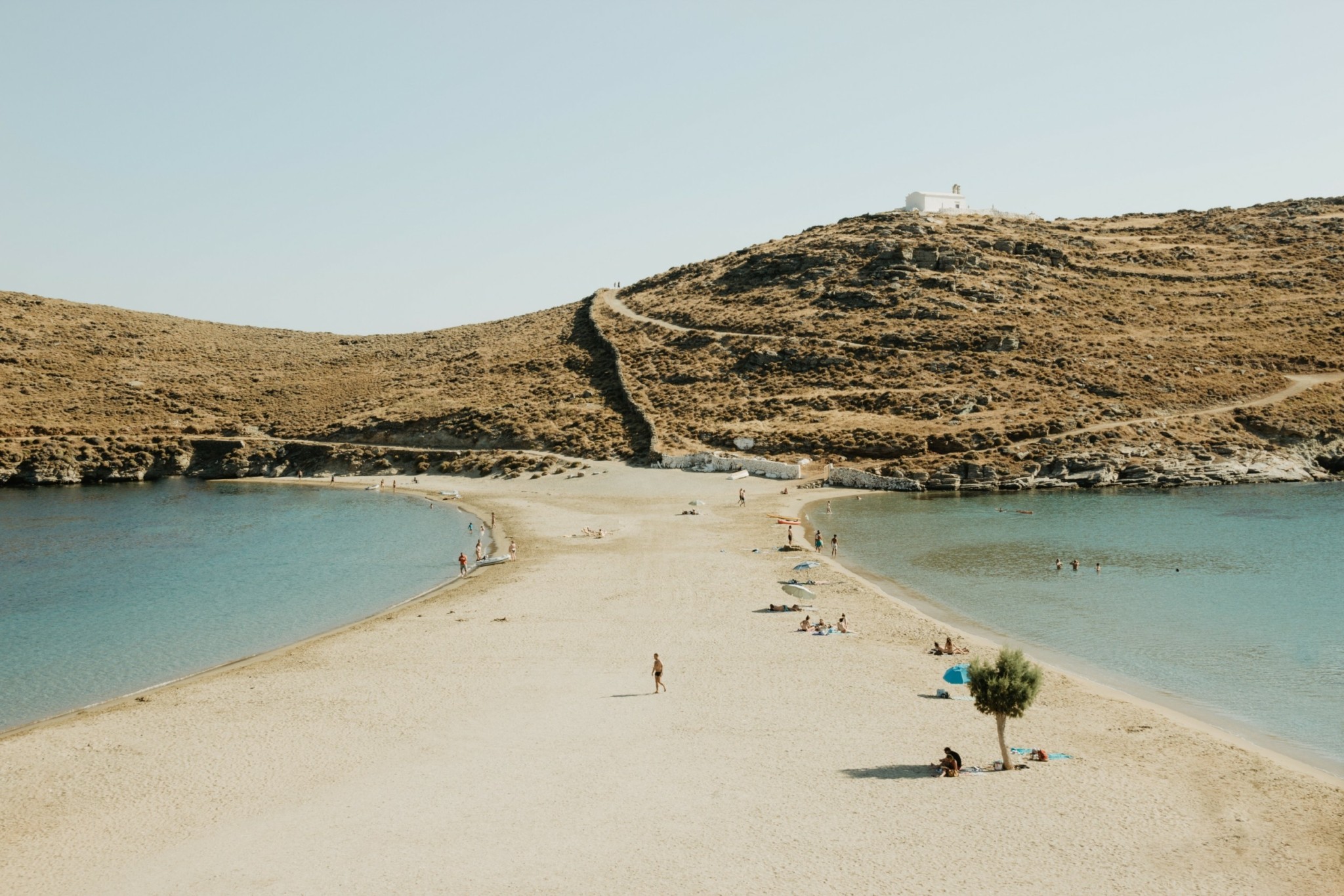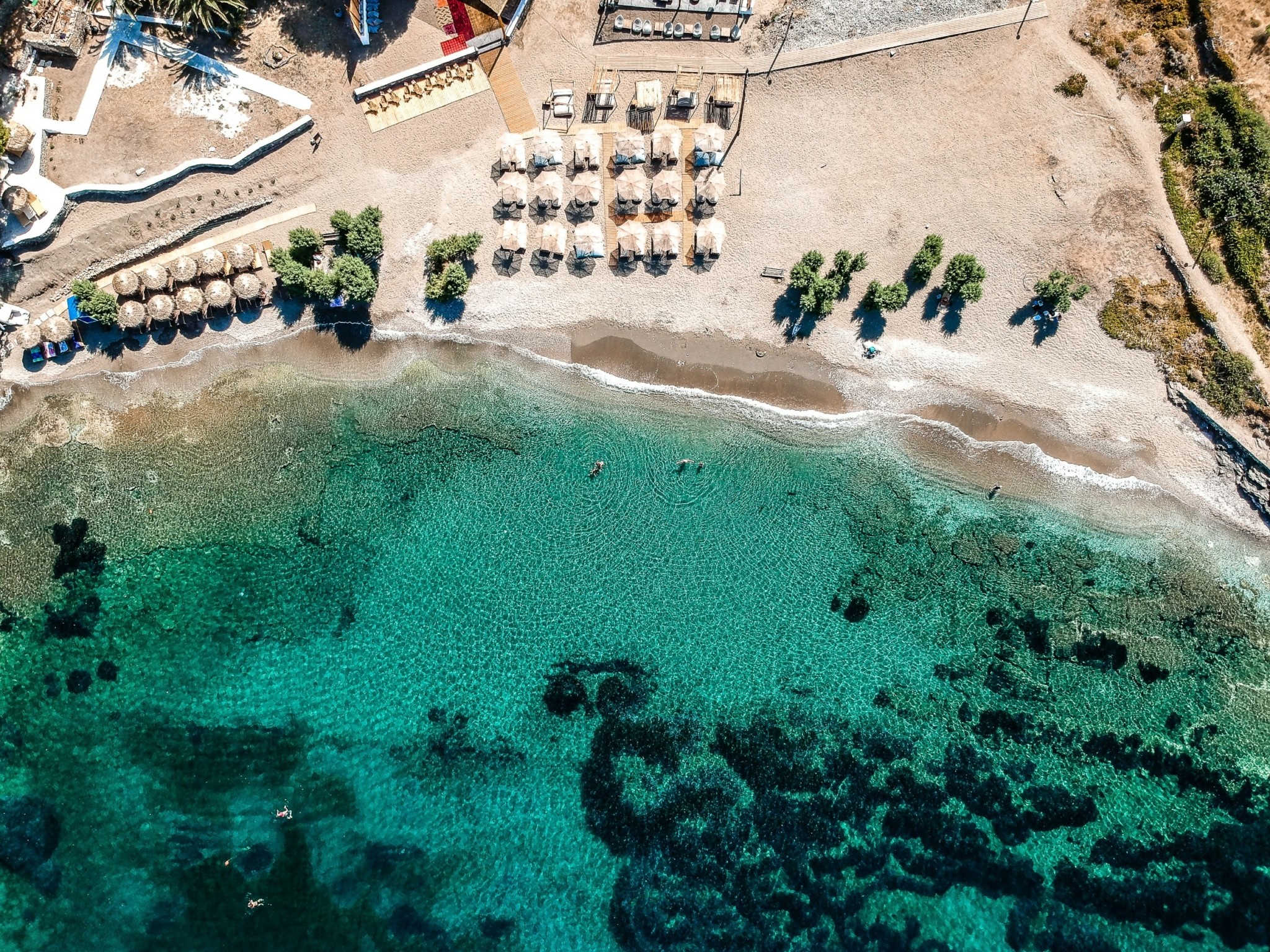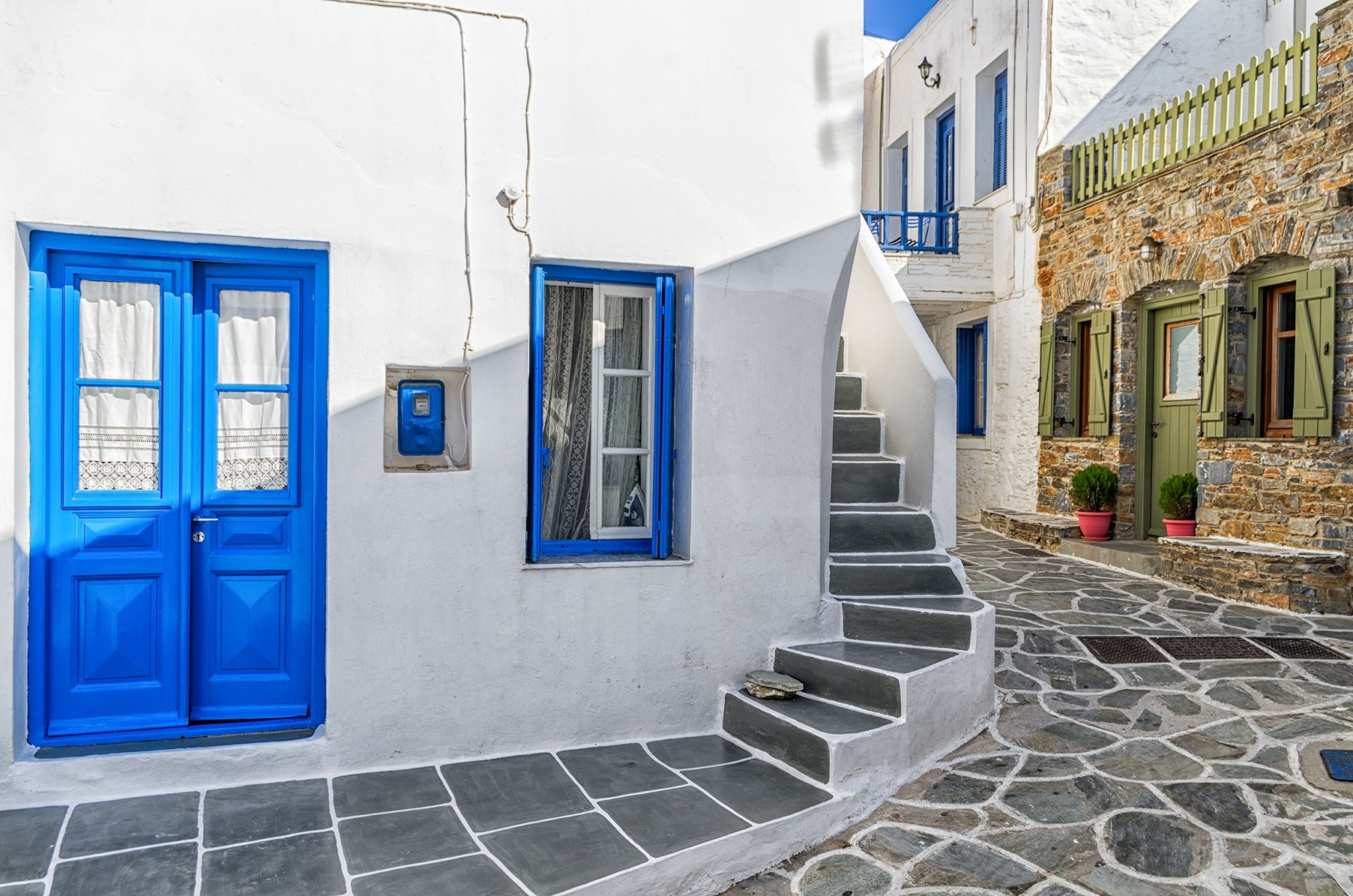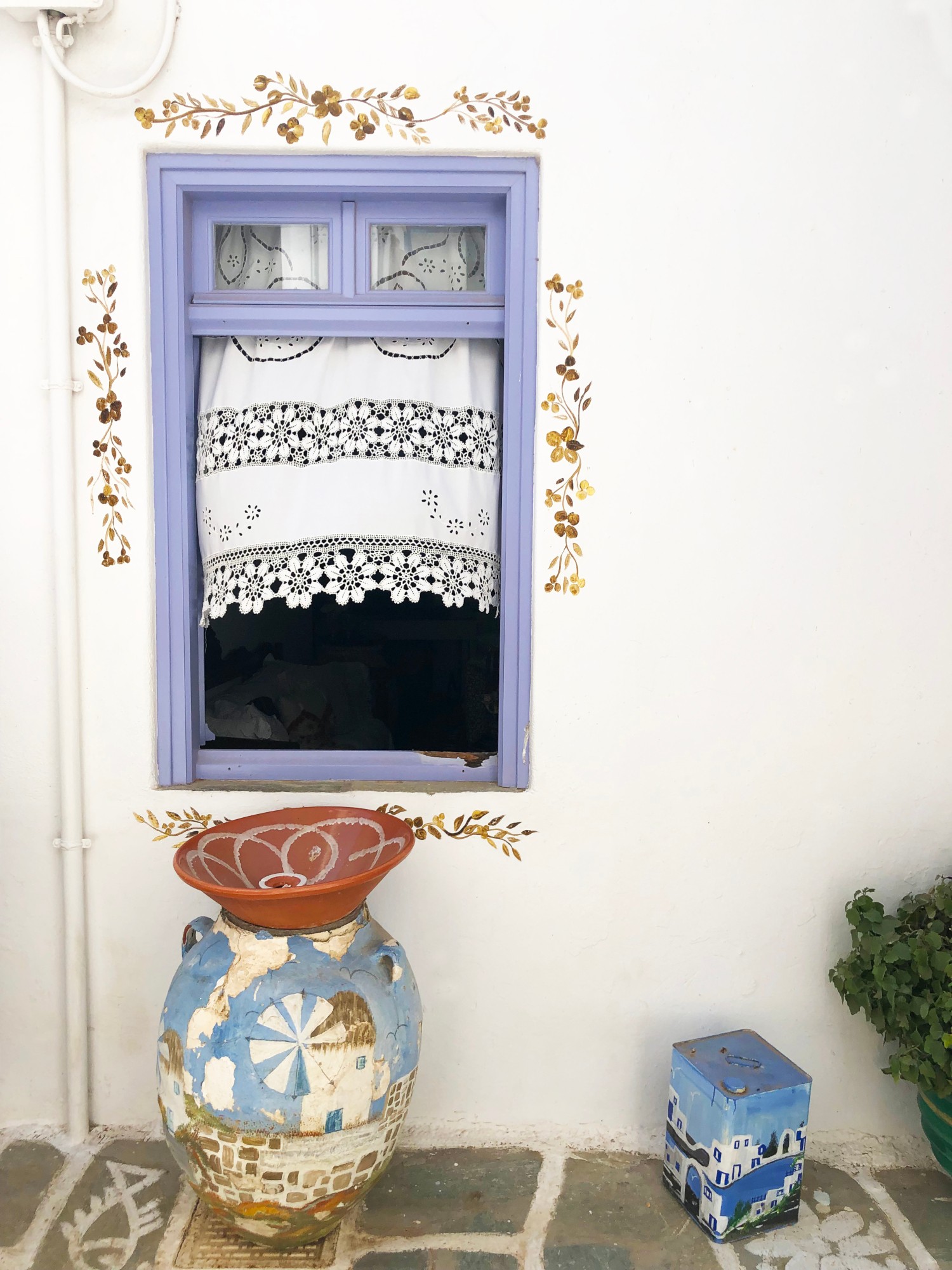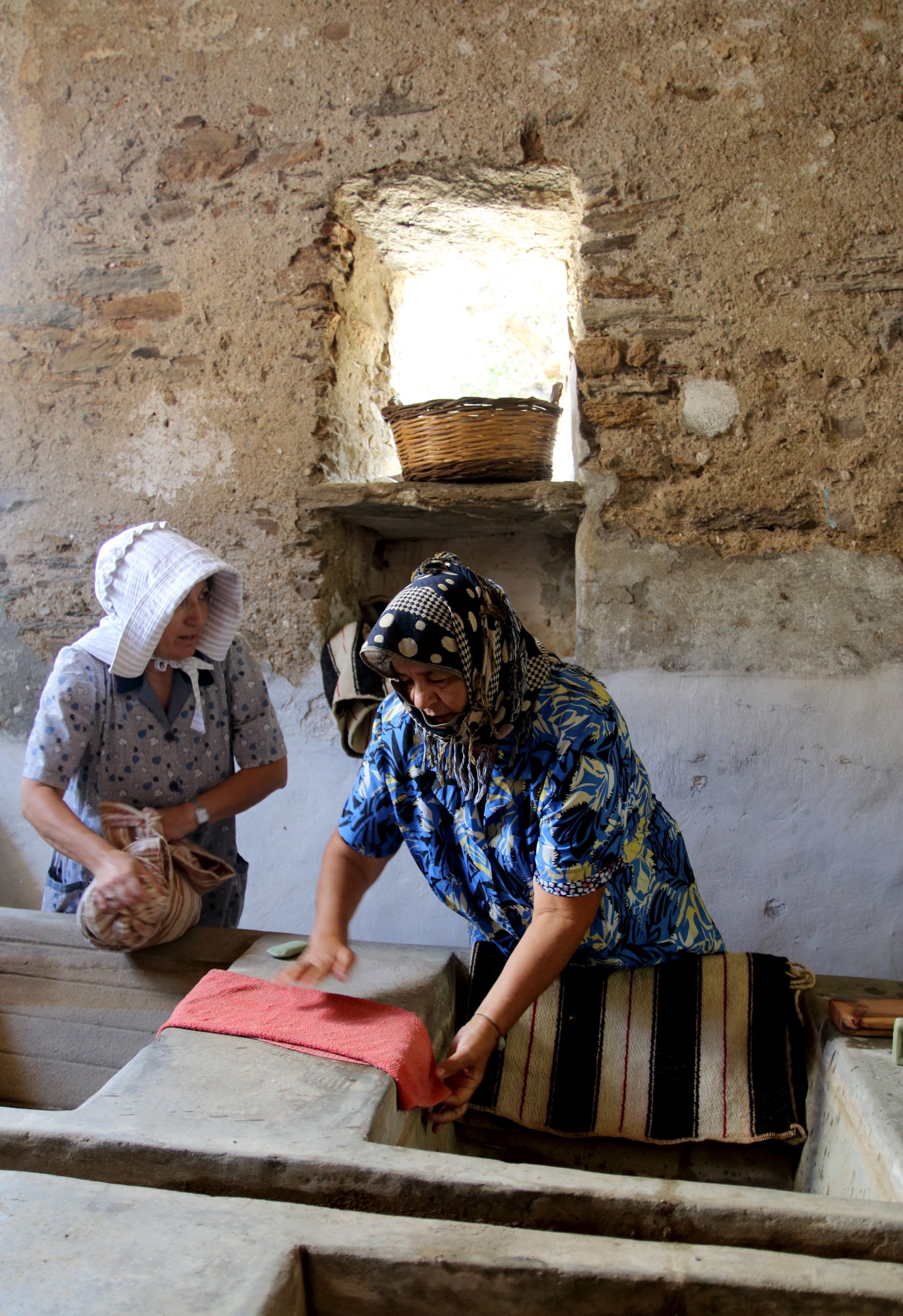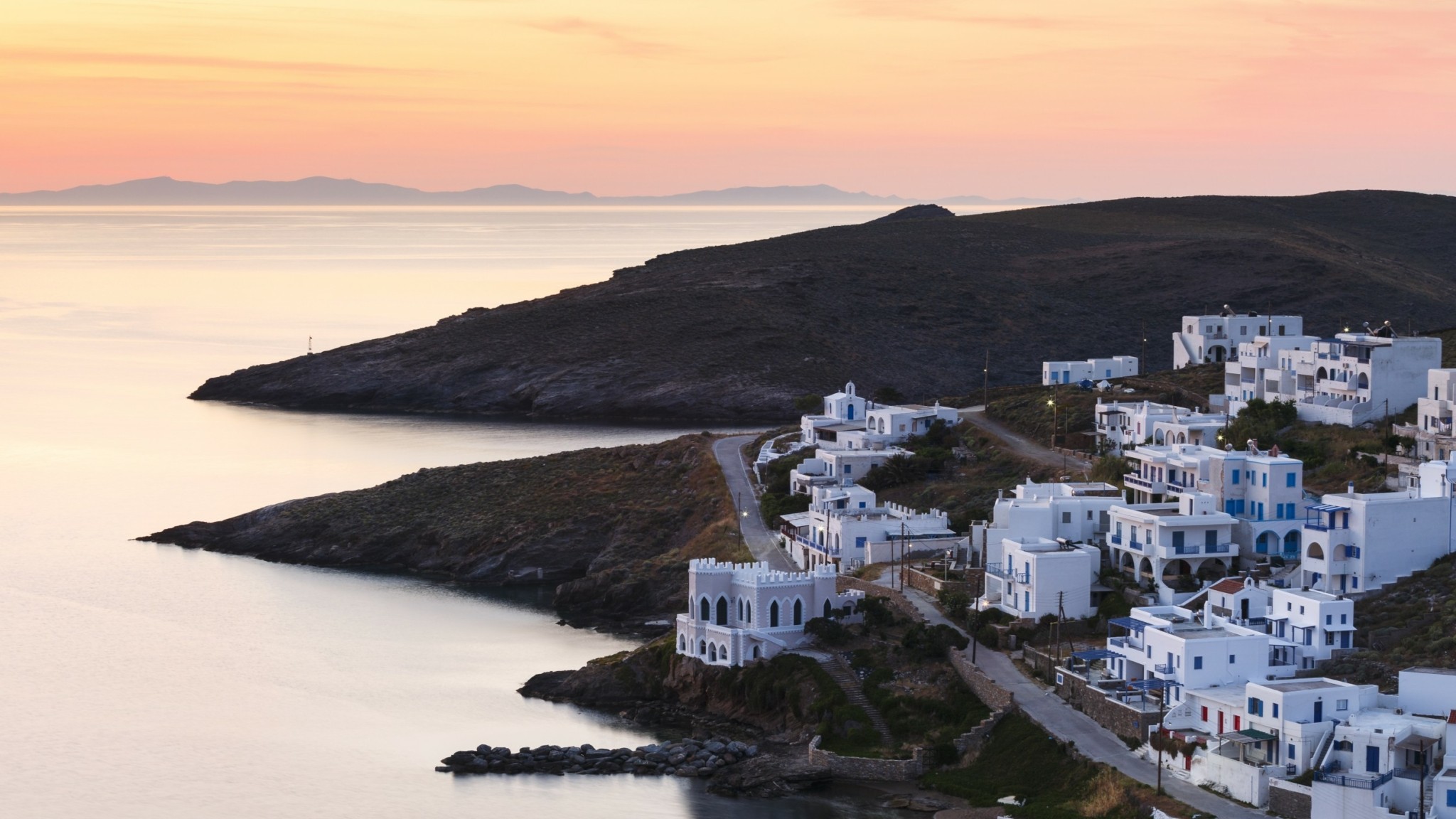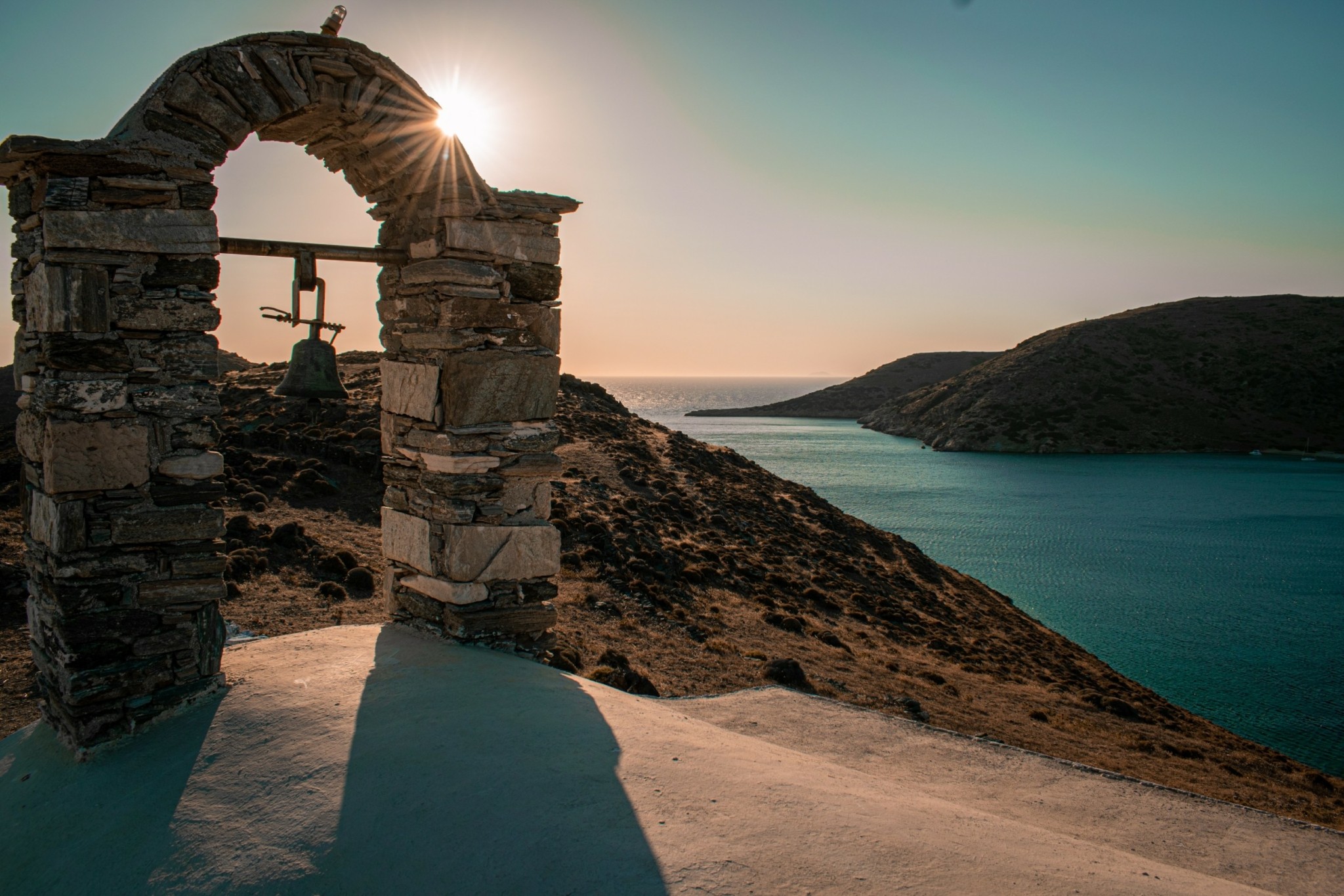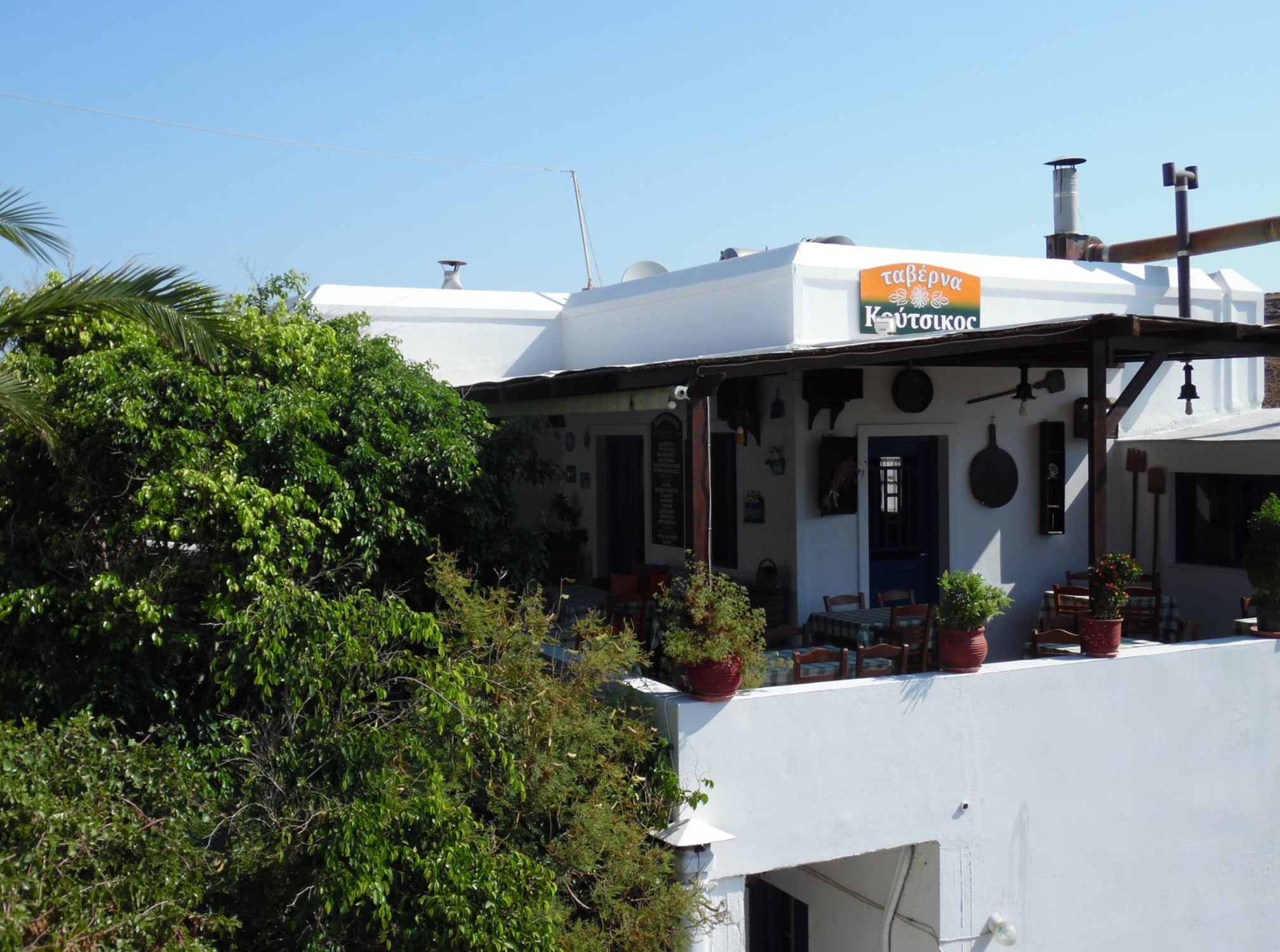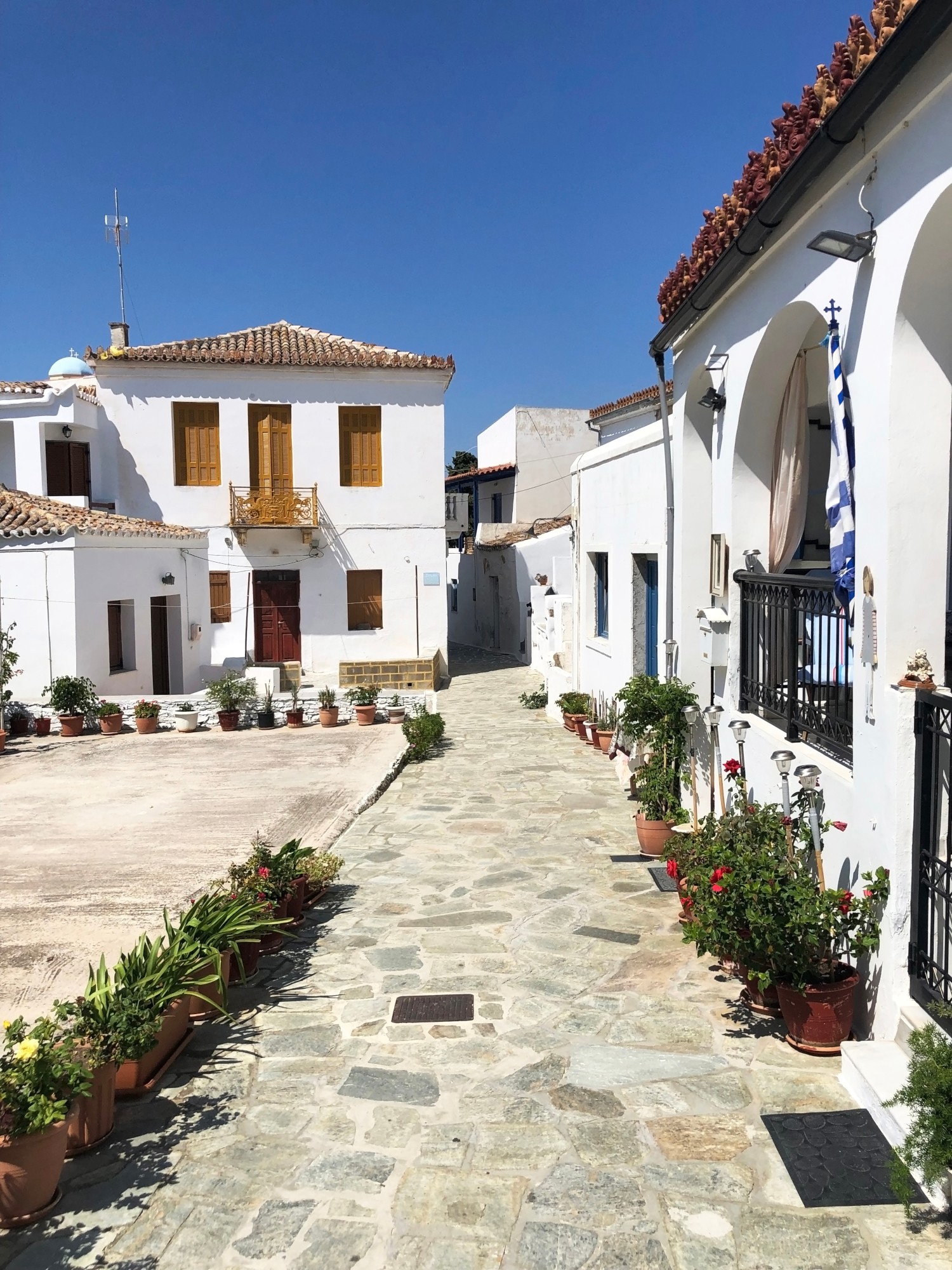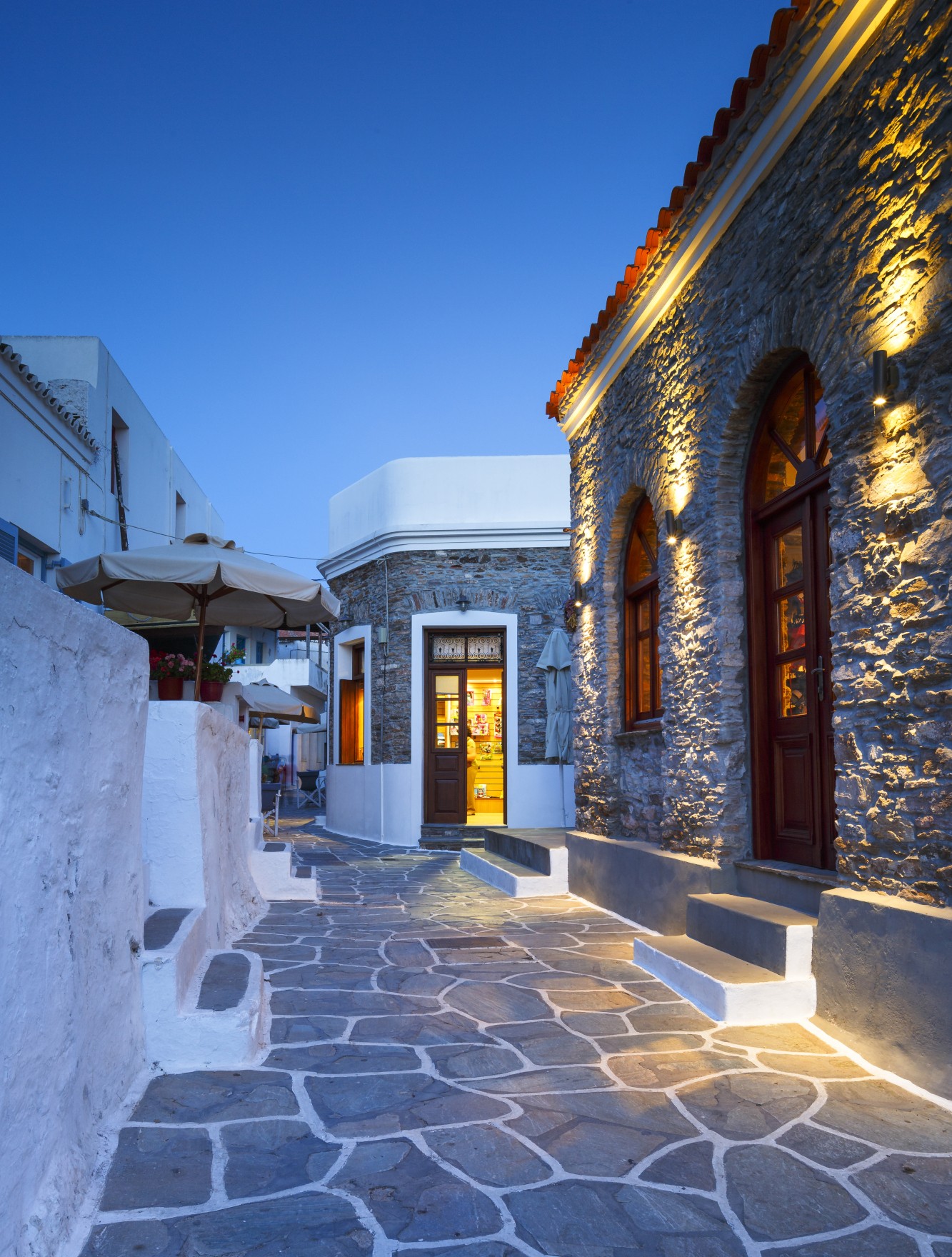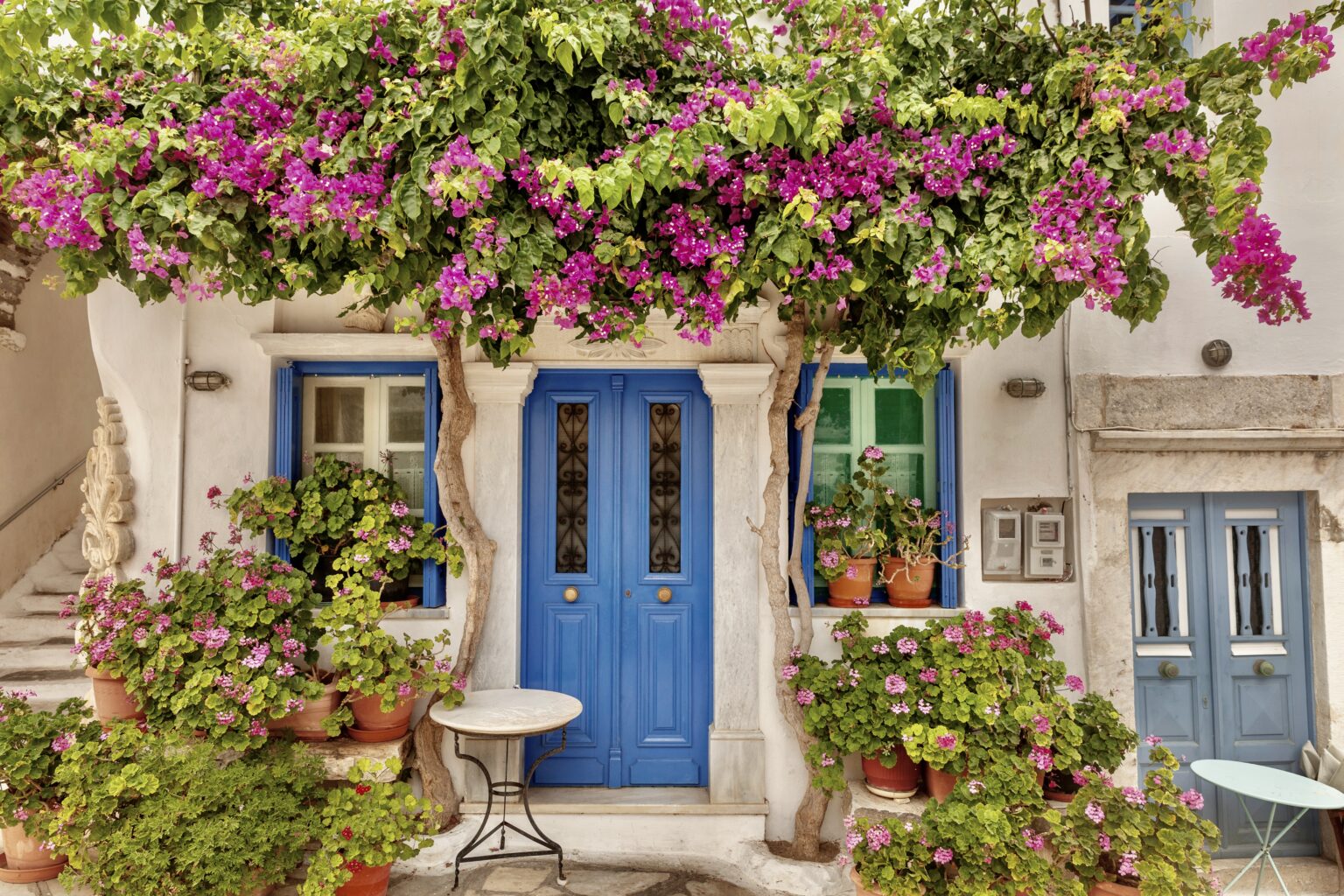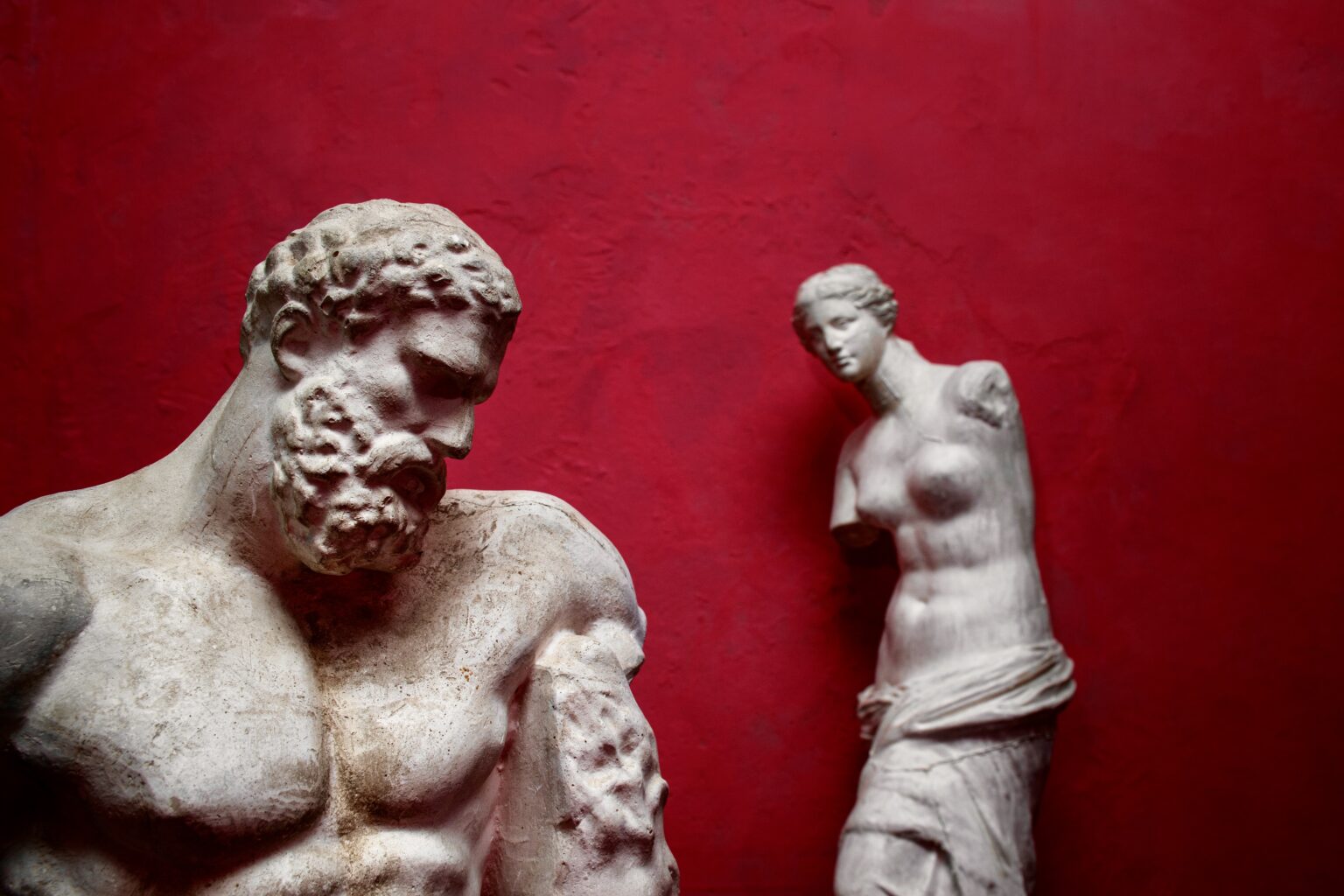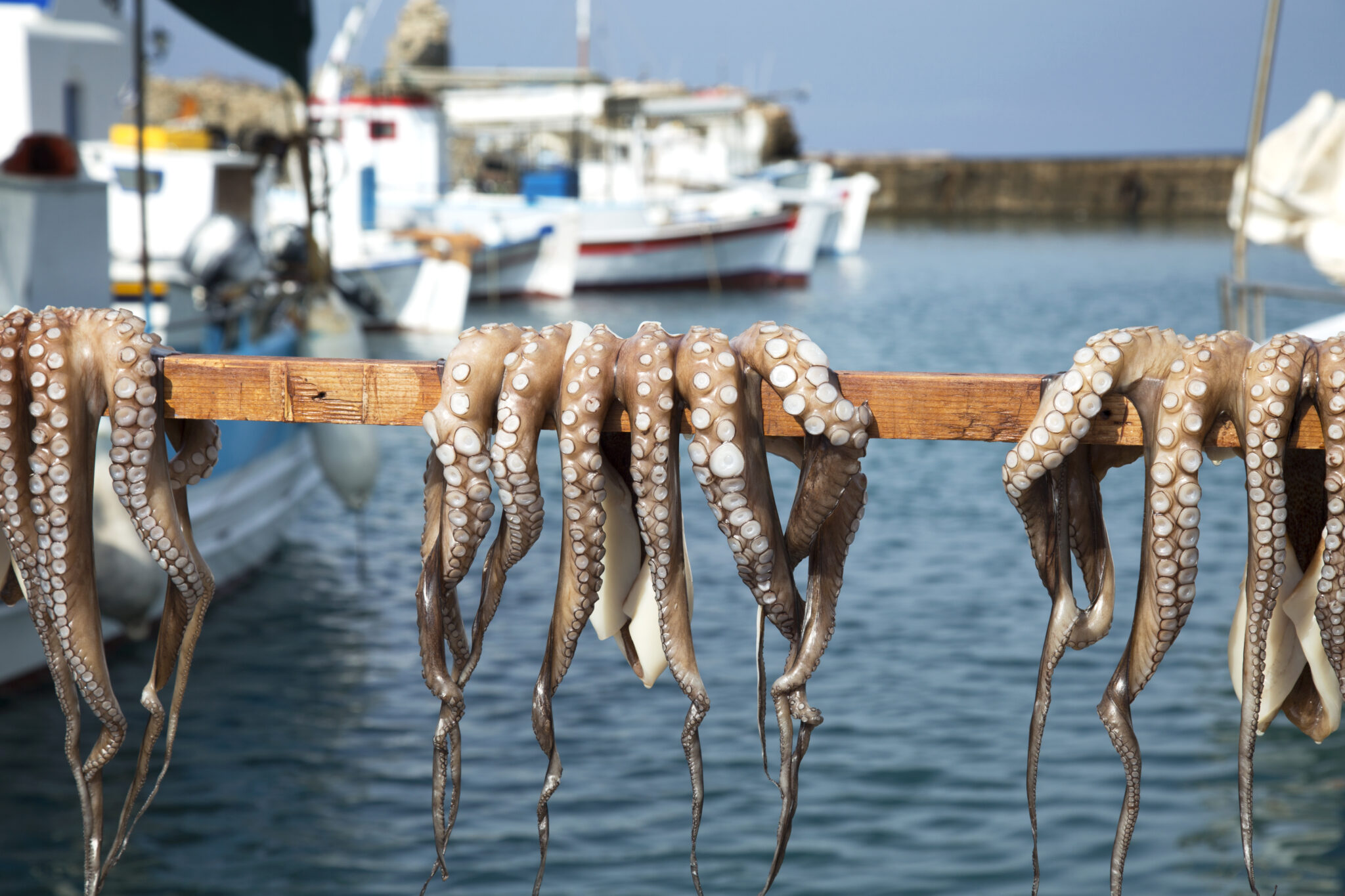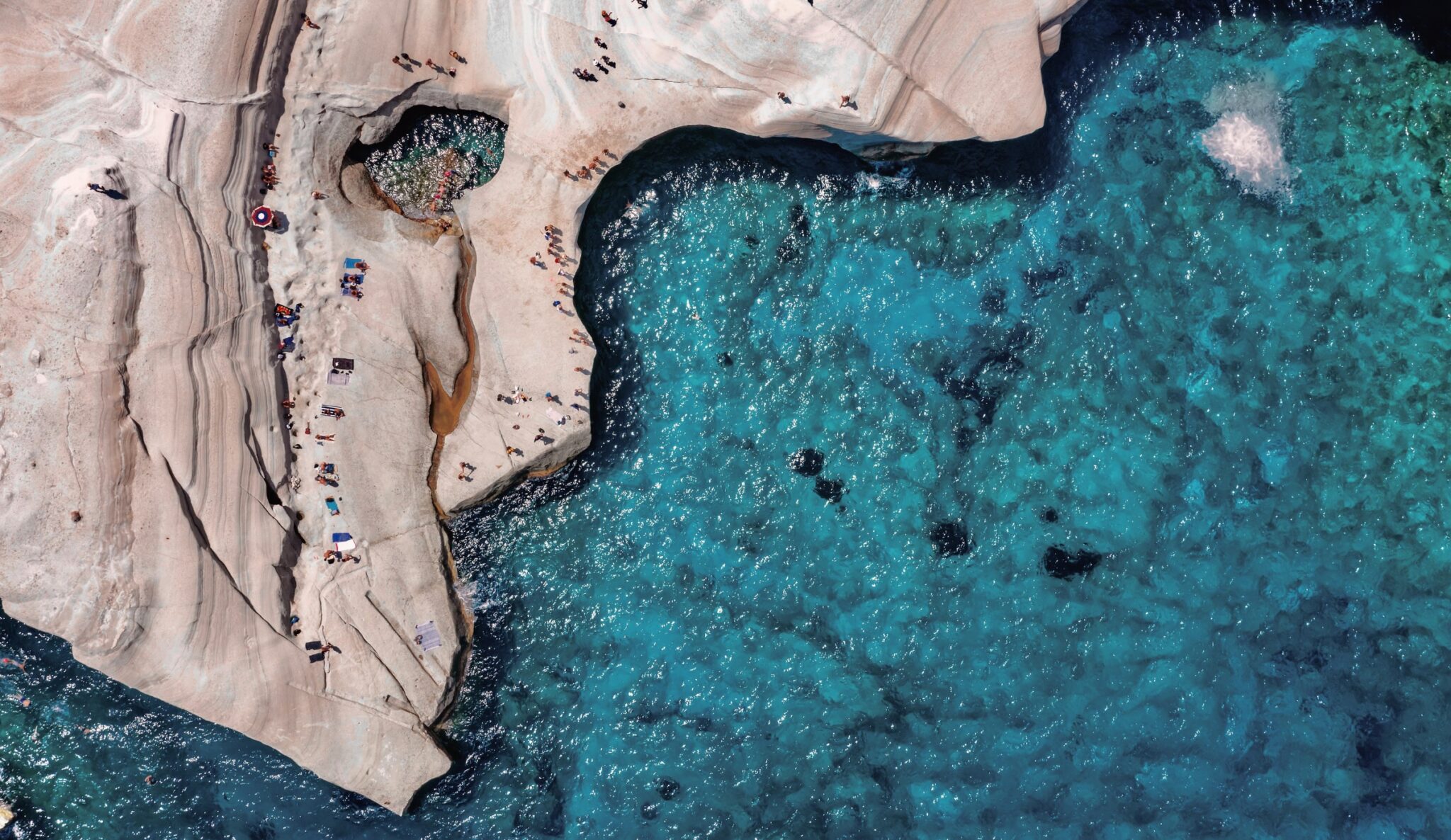Bright white churches, built as offerings by seamen of the past, spread in every corner of the island, goats standing on the steepest rocks, donkeys with their hair standing up in the strong, Cycladic wind. The only irregularity compared to the usual Cycladic landscape is the dense pine forest surrounding the church of Panagia Canala, known for its festival every August the 15th. The whole island is known for its church festivals and its music all year round.
First contact with Kythnos starts at the port of Merihas. It’s a scenic bay with a lot of tourist activity, lodgings, cafés and taverns, and not far from them all, the always young “Akrotiri club” at an amazing spot just outside the port, on a rock ledge. The island’s two main roads start at Merihas: one leads to Hora and goes on towards Loutra, and the other goes to Dryopida, Panagia Canala, and even further to the South to the bay of Agios Dimitrios.
The first dips
Choosing the road from Merihas to Hora you can enjoy one of the most beautiful sunsets on the Cyclades, just before the beach Martinakia, and then continue to the bay of Episkopi where you’ll find the island’s only beach bar. Kythnos has countless beaches, as we’ve already mentioned, and you can choose one, depending on the wind and on how much you’re willing to drive. After Episkopi, and before you reach Hora, you’ll see a sign showing the direction to Apokrousi and, if your car can handle the dirt road, to one of the most photographed beaches, the famed Kolona. Since the road there is not only a dirt road but also very narrow and dangerous, you can also reach Kolona on foot from Apokrousi, but also by boat from Merihas.
At the beautiful Hora
On the main road again, next in line is Hora. A quintessentially traditional settlement with cobbled streets, porticos, stone-built houses and colourful Cycladic windows. Here you can see the church of Agios Savvas with the 1613 inscription above the door, the church of Agia Triada (Holy Trinity), and that of the Sotiras (Saviour) with the lovely 17th century wooden temple, as well as the historic monastery of Panagia Nikous which is a bit further away. Its name comes from the Byzantine Panagia Nikopoio, ans it’s built on ancient temple ruins, and is home to one of the biggest church festivals on the island on August 15th. In this area you’ll find the restaurant “Steki tou Ntezi” (2281031204) which is worth visiting both for its grilled meat and the traditional Greek cuisine dishes.
Loutra and the vicinity
Loutra is the port of Hora and it got its name (Loutra means baths/hot springs in Greek) from the thermal springs there, that were known already in the ancient times, and also give the island its second name, Thermia. A few years ago, the hot springs were open to visitors and you could bathe in them while taking in the…vintage décor, but today they are not in operation. At the time of writing, the call for tenders is in process for the 7.018,4 m² facilities that used to be the Xenia hotel, with 46 rooms and the hydrotherapy centre with the 14 marble baths. The hotel is a listed building designed by the royal architect of the Ottoman period, Christian Hansen, and was later, between 1871-1891, modified by Ernst Ziller. It’s a building you’ll certainly stop to admire, while hopefully you can visit the spa centre on another visit (if and when the project is completed). In any case, you can dip in the sea at the edge of the beach and experience the healing properties of the thermal springs that open into the sea. You can also walk to the beach of Agia Irini, where you can go swimming and also enjoy the fresh fish prepared by “Soumas” at “Arias” (2281031371).
Hiking with a view
If you like hiking, have the equipment, and the weather allows it, the trail that unites Hora to Loutra is very much worth it, as is the trail linking Loutra to the medieval Castle of Oria (unless you can handle it in one go, starting from Hora) which used to be the island’s capital, and where you can see ruins of houses and of two churches. The incredible view from up there is the best reward for the effort needed to reach it, while it’s worth noting that this settlement was inhabited until 1537 when it was destroyed by the Turkish pirate Barbarossa, and the survivors were transferred to Messaria, that is today’s Hora. Another reward for your troubles is the food at “Koutsikos” (2281031185), with the lovely garden and the amazing cuisine (with their own meat and vegetable garden) that is off the road between Hora and Loutra. Not to be missed.
The special Dryopida
The other main route is the one that starts at Meriha in the direction of the hidden away Dryopida. Here the bright white two-storey houses have tiled roofs, since the art of pottery has been very much developed in the village and because it is protected from the wind. At Dryopida you can visit the local Follkore Museum (2281361100) and most certainly the Katafyki cave which used to be a mine from 1830 to 1910 with an underground tunnel that leads to the beach Lefkes, which was used to transport the ores to the merchant ships.
Southbound
After Dryopida the main road leads to the southeast and a line of small and big beaches (Kalo Livadi, Liotrivi, Lefkes, Zogaki, Naousa, Kouri, Agios Stefanos, Ai Giannis, Vasilika -you can get you fill of beaches) while at a 6 km distance you can find the beach settlement Panagia Canala, named after the church, with many amenities and a variety of beaches nearby: Megali Ammos, Ammoudaki, Antonides (you’ll have to go down several steps for this one). Back on the main road and heading to the bay of Agios Dimitrios which is the southernmost edge of the island, study the wind and choose a beach depending on its accessibility and orientation. Because if there’s one feature unique to this island it’s that the visitor is able to be on a beach alone with their friends enjoying the clear Aegean waters, even in the middle of the summer.



